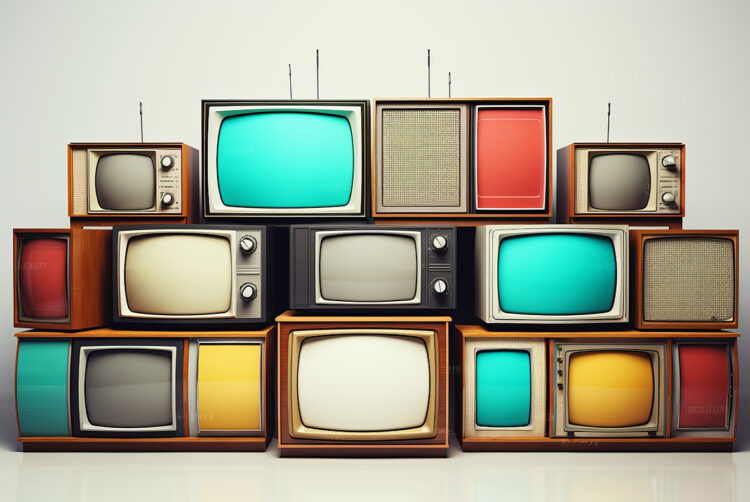TV just isn’t ‘telly’ any more… so what do we call it now?

Opinion: 100% Media 0% Nonsense
Whatever we call it, TV can still bring people together and build brands in the long term, but it must shout about it more loudly.
Amid all the positivity around marketing “confidence” appearing to improve heading into this year, TV is set to have another very tough year.
Media-buying agency bosses I’ve spoken to in the last week point to clients turning on late spend in the run-up to Christmas to push deals and discounts. Looking beneath the headlines of last week’s Advertising Association quarterly adspend report, forecasts have indeed been revised up for search and online display, while TV, the industry standard for impactful brand advertising, has edged down.
And yet TV has never been more effective, according to Peter Field. On the sell side, broadcasters have become sophisticated at selling TV, judging from the depth and breadth of recent upfronts by ITV and Sky Media.
What partly explains this disconnect is more than a shift in audiences from linear to digital (which, if you look at Barb data, tells a more nuanced story) and it’s more than a rise in competition from short-form platforms (which, I have previously argued, is a bigger existential threat to TV).
On the buy side of TV, there is somewhat of an identity crisis being played out before our eyes.
Should we even call this thing TV any more?
In our “Friday Review” newsletter a couple of months ago, I referenced a quote from former Thinkbox chair Tess Alps that has become a sector favourite: “TV is not dead, it’s having babies.”
Alps turned out to be more right than she could have predicted in 2015. Television has been a busy procreator.
Look at the sheer variety of jargon used to describe new forms of “telly”: AVOD, SVOD, BVOD, HVOD, FAST, UGC, short-form, long-form, IPTV, 4K, HD, CTV, OTT, linear…
Whereas my note made much of the medium’s success in spawning new variants for a digital age, a LinkedIn post by Lydia Esler, a TV producer and trainer, gives the “babies” hypothesis a very different spin.
“We still don’t have a better idea what to label video media now,” Esler warns. “When we think of broadcast, we think of TV and radio (above-the-line media).
“‘TV’ is everywhere. Televisual material can be played on all types of screen real estate. But if you say ‘TV’, people think of a set-top box, which delivers live-action or screen-recorded content. But it is not all strictly broadcast (above-the-line) or TV (linear media on a set-top). So where are the variables?”
This is more than an academic debate for Esler. She reports of real problems providing training to marketers about the medium.
Esler adds: “We have reverted to the umbrella phrase ‘AV’ in the media world to describe the collective of video products. But that isn’t great either. It has simply hijacked another industry’s name for audio and visual systems for outdoor, live events, stages and installations.”
The big show
In response, Alps insists that “we all know when it’s TV and when it’s not, and so do viewers”.
But do advertisers?
As WPP agency Wavemaker’s UK CEO told The Media Leader at The Year Ahead 2024, clients are worried about being “behind the curve” and are asking: “Why are we still on telly? Can’t we be on more of TikTok?”
Watch: Media agency clients nervous about being ‘behind the curve’, says Wavemaker UK CEO
The one market that has grown of late is BVOD, according to the recent AA Expenditure Report — up 28%. But that, in part, is a substitution from linear (down 3% for the same reporting period).
And, as Field warned at our Future of TV Advertising conference in December, the TV sector needs to “be careful what it wishes for” when it comes to selling more on BVOD.
If TV’s digital ad-viewing experience becomes the same as social media, where speed, targeting and interruption appear to be prioritised over quality of production, then the power of TV is eroded over the long term.
Because what makes TV distinct is what makes broadcast distinct: it is a medium designed to be watched by a lot of people at the same time.
Human beings are hardwired to care what big groups think. You might not know it from some of the shameless world leaders we’ve become accustomed to of late, but protecting a reputation used to be a matter of life and death in prehistoric times.
Viewers suffering from identity loss too
If shared experience is so important to what makes TV distinct, then perhaps broadcasters need to think more about how to invest in the public realm rather than take part in the global streaming wars.
We were reminded last week how colossal Netflix has become. ITV and Channel 4 can’t afford to waste time showing up to a gun fight with a butter knife.
By all means give advertisers all the measurement tools and formats they desire, while feathering your content archive with cheap US imports and FAST channels. But these are tactics, not a strategy.
There is a reason TV will always win with live entertainment, sports and big, newsworthy events. We want to come together to share important moments.
Because it’s not just TV that is suffering from a loss of identity. People all over the world are still juggling how to live lives well in a hybrid digital and offline world.
TV, no matter if it’s digital or linear, still has a powerful role to play by bringing people together. It and its babies should broadcast that message more often.
 Omar Oakes is editor-in-chief of The Media Leader
Omar Oakes is editor-in-chief of The Media Leader
100% Media 0% Nonsense is a weekly column about the state of media and advertising. Make sure you sign up to our daily newsletter to get this column in your inbox every Monday, as well as key updates with what’s happening at The Media Leader and our upcoming events.



